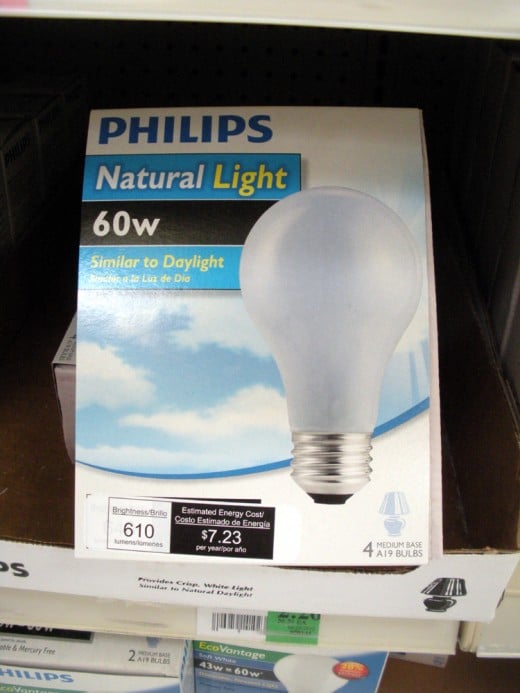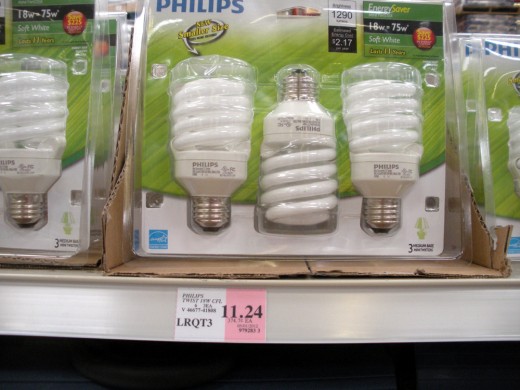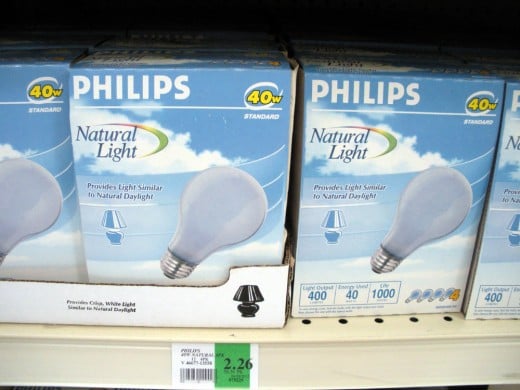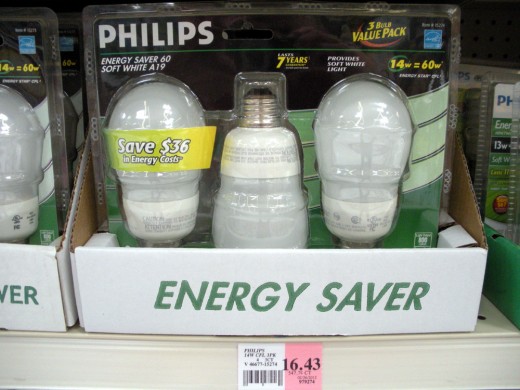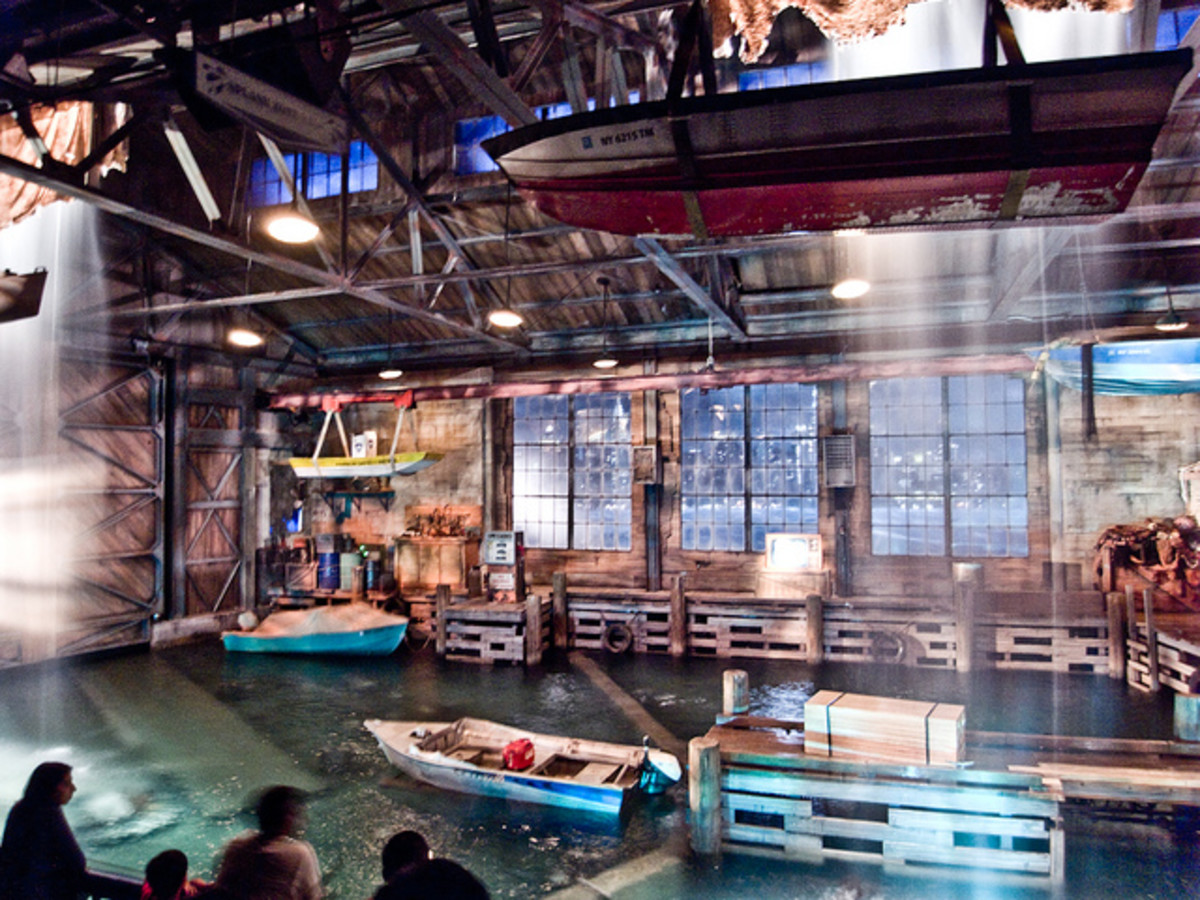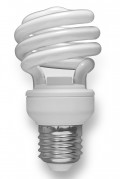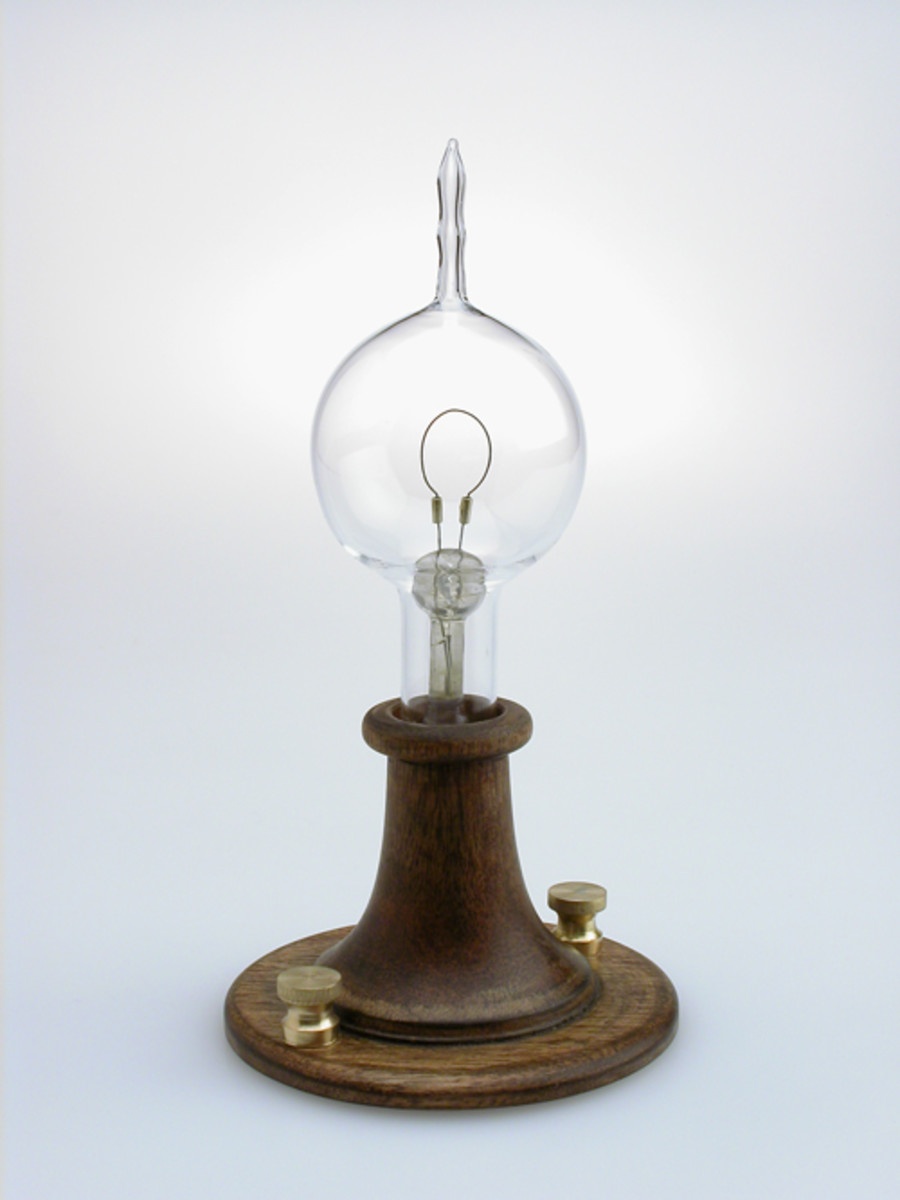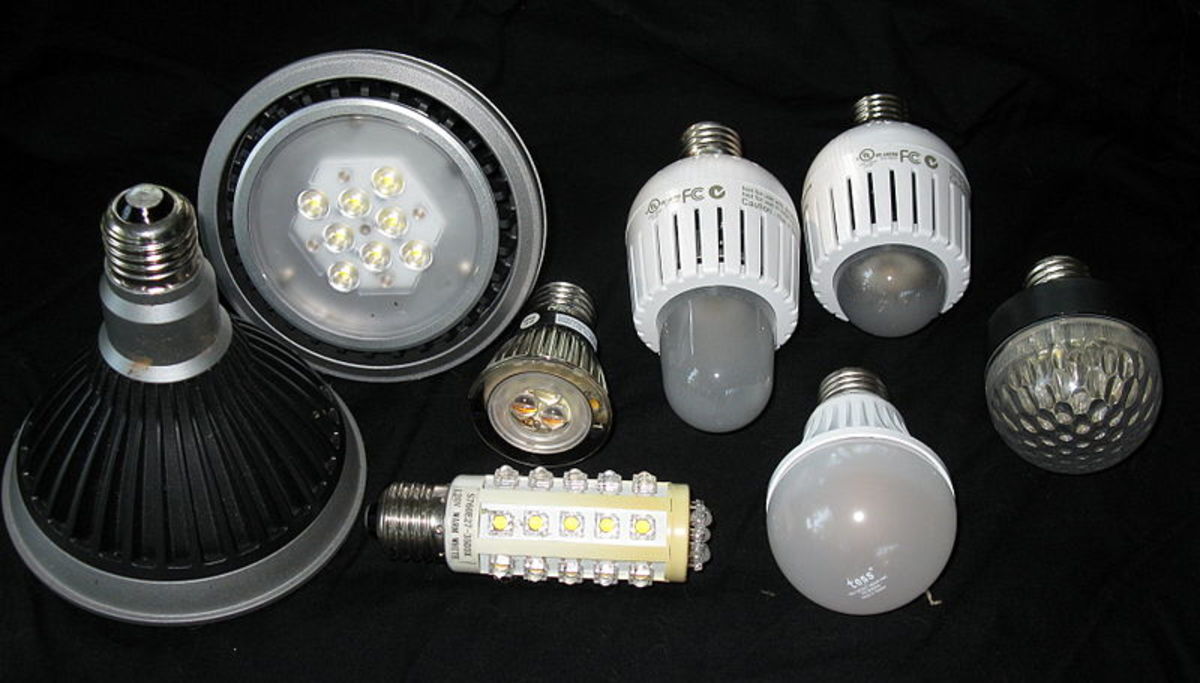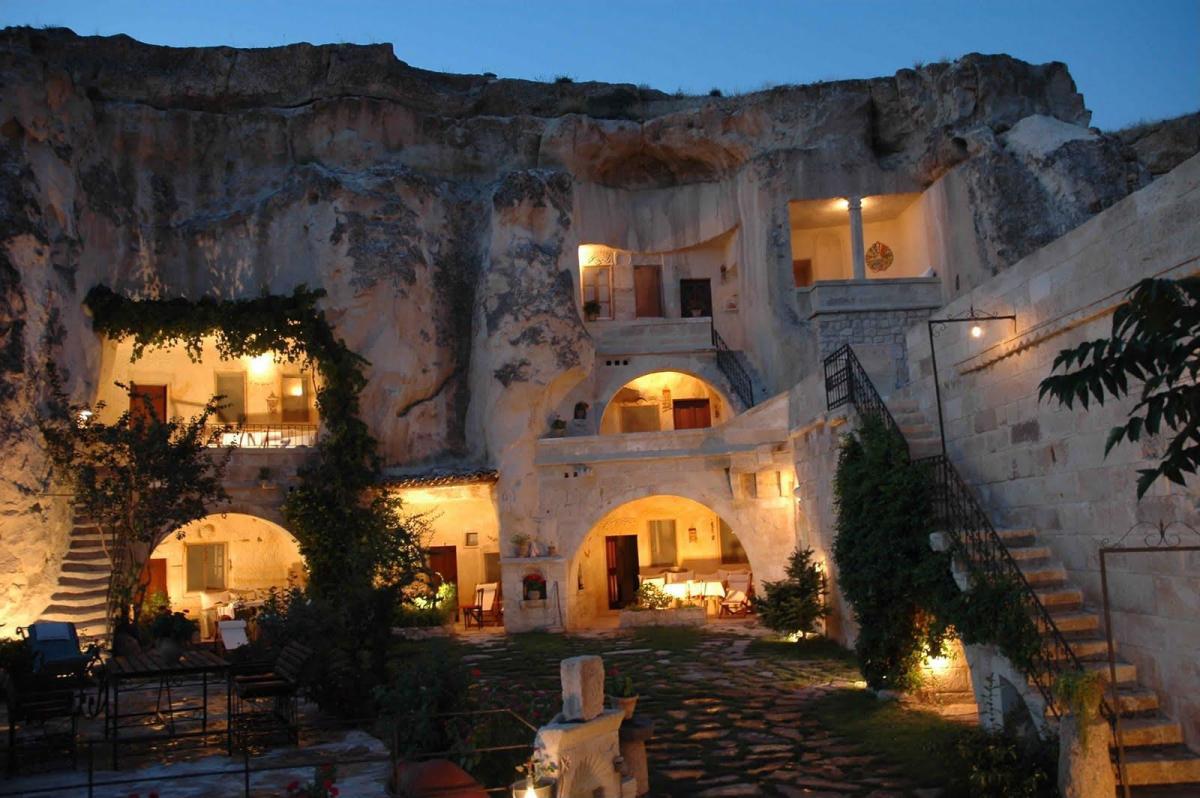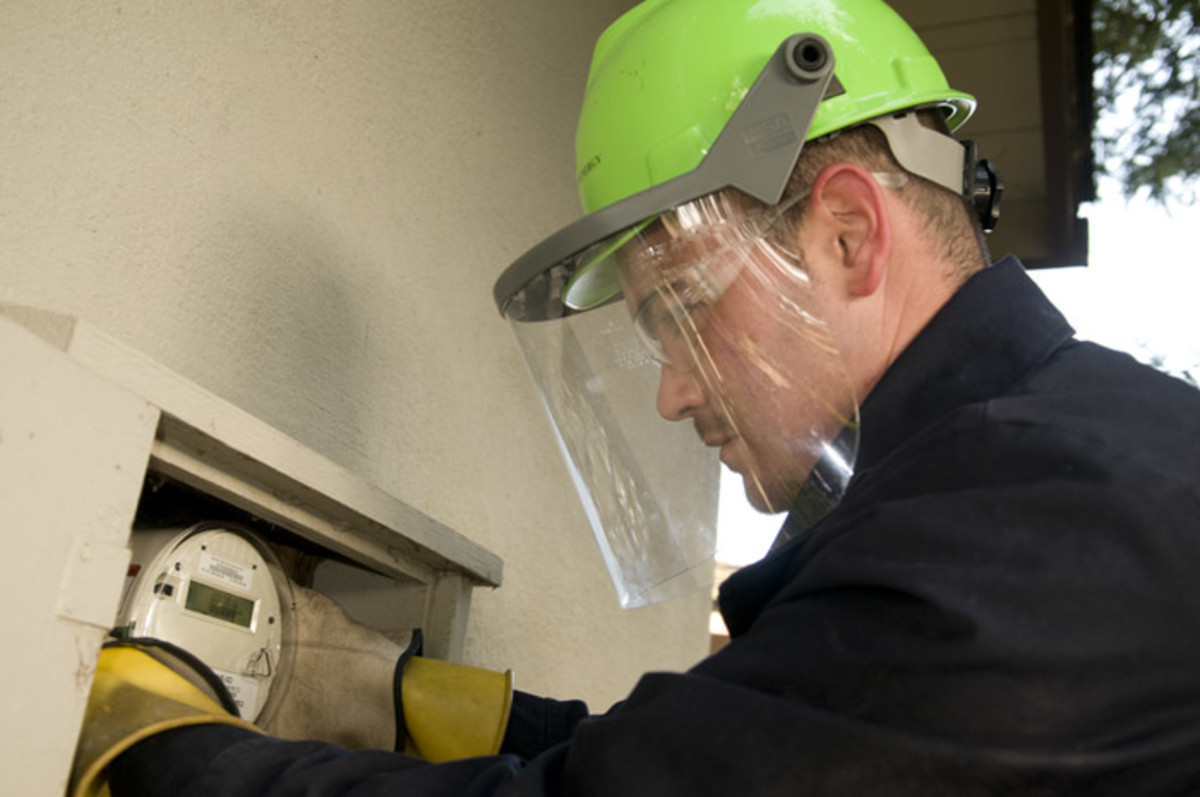Do The New "Energy-Saving" Light Bulbs Really Save You Money?
What's All the Fuss Over Light Bulbs?
Frankly, I've been changing light bulbs since I was about 10 years old. The government, at the behest of special-interest groups, always works to make things more complicated than they need to be.
Can You Believe What You Read?
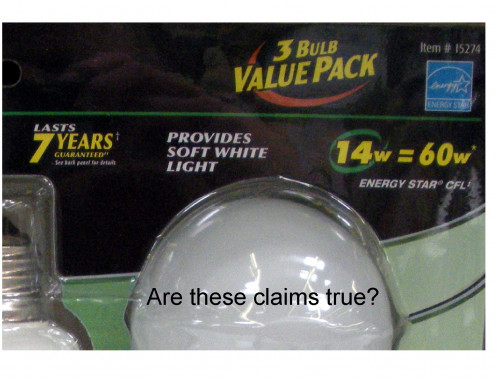
Watts vs. "Lumens"
There are many different means of measuring the output of any given type of light. Most of us are familiar with watts. We grew up with watts. It was easy to go to the closet and select a 60-watt bulb to replace one that had burned out.
Wattage is a direct measure of power output. It stands to reason, therefore, that the higher wattage rating a lightbulb has, the brighter the light will be. The thickness of the internal filament is also a factor, with higher wattage bulbs needing a thicker wire filament to withstand the heat generated.
Lumens are a measurement of the brightness of the light given off. So a high-wattage bulb produces more lumens than a low-wattage bulb.
If you get into theater or television production, you'll find yet another term used to define lighting power: kelvins. I won't go into that further, but suffice it to say that there is plenty of lighting-related terminology available to confuse the issue.
Marketing Language Trickery
In an attempt to confuse consumers into thinking that the new fluorescent, "energy-saving" bulbs are something new and different, the manufacturers have eliminated the term "watts" and substituted "lumens" in their advertising and on the packaging.
Lumens are not something new--only something confusing to consumers. The old incandescent bulbs also produced lumens. The new fluorescent bulbs consume wattage to provide light. They are not different by those terms, as the corporations would have you believe.
Then they turn right around and compare the relative wattages of both bulbs, claiming that a 14 watt CFL (Compact Fluorescent) is equivalent to a "regular" 60 watt bulb. However, they are claiming that it gives as much light--which it will not, because it is lower wattage. They are deliberately mixing up lumens and watts to further muddy the issue. It will draw less wattage; in so doing, it will also give off less light.
I don't know where these smooth operators went to school, but it sounds like fuzzy math to me. No matter how you slice it, 14 ≠ 60, and 18 ≠ 75.
Since when are advertisers and marketing agents known to be forthright and truthful? If you believe them, I may have a spare bridge or two for sale.
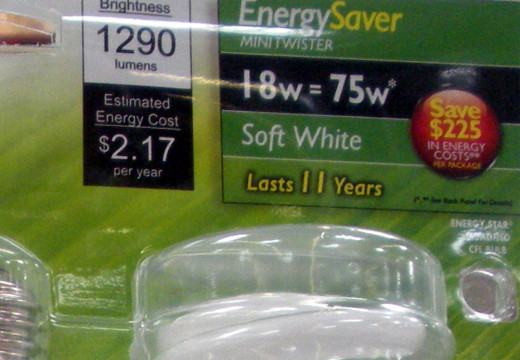
Scientific Measurements vs. Human Eyes
There are many different scientific tools available to measure all kinds of light from sunlight, light bulbs, camera flash mechanisms, right on down to wavelengths invisible to our eyes.
That's all well and good, but the most sophisticated instruments still cannot replicate the human eye. What light we see and how we see it is very different than how it is seen by these instruements.
Furthermore, everyone's eyes are different from anyone else's, and sometimes one person's eyes are different from each other. Our eyes change as we grow and age, and our ability to see changes. If this were not the case, no one would ever need eyeglasses. That's the crux of the matter: eyes change; instruments remain constant. Instruments cannot perceive light in the same way our eyes do, nor adapt to how our eyes change.
Faulty Logic in the Comparisons
Trying to compare wattage to lumens is the classic "apples and oranges" flaw. They try to compare these new fluorescents to incandescent bulbs, but it is pure nonsense. Sure, they put out light, but to try to say that a much lower-wattage bulb is equivalent in light output to an old 60 or 75 watt incandescent is nothing but pure propaganda.
Just ask anyone over age 50 or 60 if the new lights REALLY put out as much or as good quality of light to see by. They don't!
When I initially wrote this article, I was 64, and I do notice a huge difference--I've only aged further since then!. The end result? I now need even MORE lights to see the same things as with the old lights. Where are the supposed "savings" then?
Longevity in General Terms
Generally speaking, a low-wattage bulb will last longer than one of higher wattage. Higher wattages produce more heat, and heat is the enemy of longevity. This is true of the entire universe: it is a law of physics, and can be extrapolated to anything from these light bulbs all the way out to the far reaches of the galaxy. A bright, hot star will burn itself out years (perhaps centuries) earlier than a cool, dim star.
Elementary School Physics
By that example, you would expect an incandescent light to burn out faster than the flourescents, and that is the claim. But not so fast...we are also cautioned, in the interest of "saving energy" to turn the lights off every time we leave a room.
Hmm... didn't we learn way back in grade school that heat causes expansion, and cold causes contraction? Yes, I'm sure I remember that lesson.
Well, you see, the filament in an incandescent light, when being turned on and off as recommended, repeatedly goes through that same process: expansion; contraction; expansion; contraction. It is very much like breaking something a bit tough (a piece of plastic or thin metal, e.g.) by bending and folding it back and forth. Eventually, you will break it. That is what is happening with the lamp filament, and when it finally snaps, the light burns out.
With fluorescents, it is the ballasts that will burn out, or they can lose their seal, and the gases can escape. The end result is the same.
Livermore, CA Centennial Light Bulb
Speaking of longevity and low wattage--there is a world-famous light bulb still burning in a fire station in California. It was installed in 1901, and has been left on 24 hours a day ever since. It's about a 4-watt bulb, and yes, it's still working.
Instead, you can read about it in detail here, at Snopes.com. Snopes is well-regarded for providing validation or debunking of assorted claims found on the Internet.
Heat and Fire Risk
Much fuss is made over checking the light fixture for the maximum recommended wattage bulb to use to avoid overheating and fires. Why was that never a problem in the past? It comes down to materials used to make the fixtures, and on a more techincal level, the gauge of the wiring used.
Light fixtures used to be made of metal and porcelain. These materials can stand a lot of heat and not melt or catch fire. The temperatures required to melt steel, or even tin or aluminum, are far higher than what is produced by even a 150-watt incandescent lightbulb. The same is true of porcelain; it's a high-fire ceramic product, and even in the kiln at temperatures exceeding 2000° Fahrenheit, it does not melt.
The fire hazard back then was with flammable materials such as draperies or piles of newspapers too close to the heat source. Now, many of our consumer goods, including light fixtures, are made of cheap plastics, which will melt and could catch fire under the right conditions.
More Faulty Claims
Fluorescent bulbs are touted as being cooler, and not generating heat. On the surface (no pun intended), this may seem to be true, as a flourescent lamp, even one that has been on for several hours, may feel barely warm to the touch, whereas an incandescent bulb gets too hot to touch quite rapidly.
While the physical temperature of the bulbs may be radically different, that's not to say that flourescents do not generate heat. They do. It is just in a different place. These kinds of lamps, regardless of size, use what is called a ballast. What the ballast does, in its simplest terms, is act as a converter, or inverter, transforming the fluctuating AC current into stable DC current. In the process, heat is generated. These ballasts can get quite warm, even hot in the process. The trouble is, they are not in areas where there is much air circulation to dissipate that heat.
Ballasts are at the bases of the bulbs (hence the bulky, clunky appearance of the supposed direct-replacements for ordinary screw-in incandescents). Right up against the electrical socket, they are much more shielded from air flow than the rest of the bulb. The same is true of ceiling-mounted flourescent fixtures: the ballast is up inside the fixture, often right against the housing that is in contact with the ceiling. Or, in the case of flush-mount down lights, often seen in kitchens, the ballast is above the ceiling, inside the fixture housing: there is nowhere for that heat to dissipate.
(You want some real heat output? Try a halogen lamp!)
False Economy
These fluorescent bulbs are advertised as taking less energy to operate and as lasting over twice as long as a 'regular' (incandescent) bulb. Neither is true.
They supposedly put out as much light for lower wattage, hence the supposed 'energy savings.' Perhaps young eyes cannot tell the difference in illumination, but older eyes can. The older you get, the more and brighter light you need to see well.
Just like "low-flow" faucets, (because of the reduced water pressure), the water must run longer to get the job done, ergo, no actual savings are realized. The same is true of the so-called "energy efficient" CFLs. There is a lower level of light output, so more or higher wattage bulbs must be used; say "bye-bye" to any true savings.
Also, they do not last over twice as long, as claimed in the ads and on packaging. In fact, we have had to replace these bulbs almost twice as often, meaning they actually last only half as long as standard ones! These claims, then, are false advertising and propaganda, pure and simple.
CFLs are expensive, as well: up to $5.00 per bulb, as opposed to about that amount for a 2 or 4 pack of standard incandescent bulbs. That makes for a further dip into the consumer's wallet, whether or not it appears on the actual utility bill.
Waiting To See!
Ah, yes, those ballasts required by the fluorescents take time to "warm up." Meanwhile, the light is even dimmer than the normal full operating output. Here's where your "lumens" come into play. As the ballast warms up, the output is less wattage, resulting in fewer lumens. The end result? Lighting that is even less useful, and visibly much dimmer.
Longer Life? Energy Savings?
I don't buy that claim at all. We've had numerous of these "CFL" bulbs burn out in normal usage far more frequently than the old incandescents.
All of our porch lights and outdoor lights on the garage have been replaced with fluorescents. They are left on all night long. Since we are retired, we don't "do" mornings anymore, so the lights are on for about a 12-hour time span. Sometimes the front porch light is on for 24 hours, if we forget to turn it off. The old incandescents lasted at least a year, often much longer. The new type, by contrast, we find burning out every 6 to 8 months.
Guaranteed? Warranted?
Right. As you can see in the photos above, these CFL's are theoretically guaranteed to last between 7 and 11 years. They do not. But just try and collect on a warranty claim. Read all the if's and's and but's in the conditions that must have existed in order for the bulb not to fail. It is ludicrous. You'll notice there are no warranties on standard bulbs. They know better. Light bulbs burn out. It is as much a fact of life as kids catching colds.
Not What You Think
In researching this article, I came across a very interesting video which exposes the truth behind much of this 'green' movement. Unfortunately, the video seems to have been taken down! All that remains is an image, and the title, "The Truth About Planned Obsolescence."
It's actually more about money than the environment. What a surprise! (Said with a heavy dose of sarcasm.)
Lower Cost?
Hardly! These special "improved" bulbs cost at least 3 or 4 times as much as the old style. As a rule of thumb, the more something is touted as 'new, improved, better,' etc., the less likely it is to be true. In all probability, it is worse: the only improvement will be to the manufacturer's bank account.
At these prices, such newfangled pseudo-improvements are not affordable for those on fixed incomes.
In order to actually realize any "cost per unit" savings these new lights supposedly deliver, you'd have to be assured that, a) the units would actually live up to their guaranteed lifespan, and, b) that you, yourself would outlive that time period. For many senior citizens, the second item might be a problem.
In any case, since the lights actually do (usually) fail prior to the expiration of any warranty period, and since the claim conditions are so stringent, you end up purchasing replacements. We're back to "What savings?!"
Let's do the math: at $16.43 for a 3-pack, that comes to $5.48 (rounded) for each bulb! Now, let's look at standard bulbs: at $2.26 for a 4-pack, that comes to $0.57 (rounded) for each bulb.
Mind you, I did the price comparisons at a discount chain grocery store--they may well be higher at hardware or home improvement stores.
Cost Comparison
Click thumbnail to view full-size



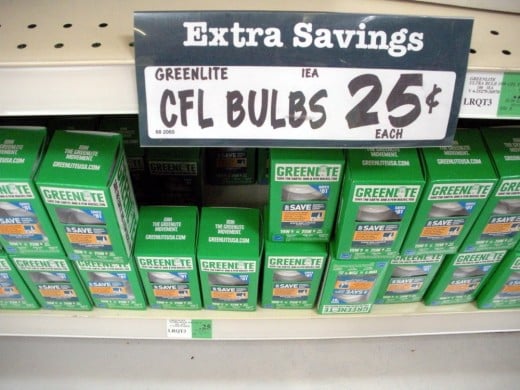
Oh, and look at this--I found some CFL bulbs at this same grocery store for just 25 cents each! Uh-huh. We foolishly tried those, too. The old adage applies: "You get what you pay for."
Overall Safety Comparisons
How to Dispose of a Burned-Out Incandescent Bulb
When an old light bulb burns out, you put it in the garbage. Maybe you even wrap it so broken glass won't cut through the trash bag and make everything spill all over. That's it. You're done.
How to Dispose of a Burned-Out Fluorescent Bulb
With fluorescent bulbs, however, you are not supposed to put them into the garbage pickup. Well, why on earth not? Because they are toxic, that's why. They require special disposal.
The ballast is electronic--considered "e-waste," much like a dead computer or TV. But that's not the worst part. Nope. The gases inside the tube that are responsible for creating the light by glowing when excited by the electrical current, are toxic in and of themselves.
It gets worse. The insides of these tubes are coated with phosphorus powder--a dangerus chemical to inhale, or get into your system. If a fluorescent tube breaks, this agent is on each and every one of the fragments, so you'd better not gather it up bare-handed. If you should cut yourself on one of those shards, you could become quite ill.
Bottom line? Fluorescent lamps, bulbs, tubes--all types--are considered a hazardous waste item, and most cities don't want you to put them into the trash that ends up in the landfills, where groundwater could become contaminated from the leaching phosphorus.
Want more? When an ordinary light bulb breaks, it simply shatters. But because of the gasses compressed inside the tubes of fluorescents, when they are dropped, they virtually explode, sending shards of phosphorus-coated glass far and wide--someone across the room could get hit in the eye with one of these projectiles.
In the "Bad-Old Days..."
Back when I was a kid, before we knew better; before there was any such thing as "Haz-Mat" disposal, my father used to dispose of burned-out 8-foot fluorescent tubes from his workshop by hurling them against the garage door like a javelin. "Poof!" they would explode in a puff of "smoke" (that was phosphorus being pushed into the air!). The tube fragments were then swept up and fit easily into the trash can.
So, yes, they do still explode even when burned out.
Aesthetics and Praticality
Finally, we come to what may be unimportant to some; vitally important to others: and that's the way the things look.
I prefer to have a clean, streamlined look. Lighting should be bright enough, but unobtrusive. The light fixture should not call attention to itself unless it is supposed to, as with some ornate over-the-top crystal chandelier. Those, however, are usually found in rich people's mansions, however, and not in your normal "every-man's" house.
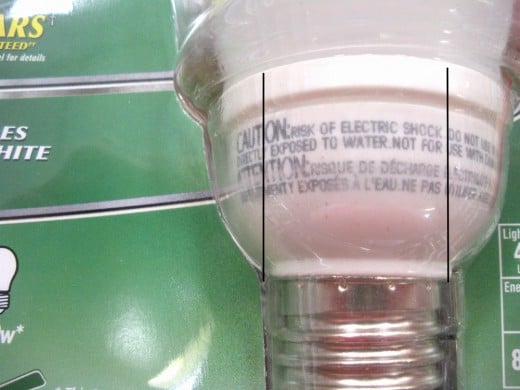
Even the most "streamlined" of the fluorescents still have that fat base with its ballast. Some are fatter than others. The coiled type are the worst, and they because the ballast adds length to the bulb, they simply do not fit into the old fixtures, so you have this ugly coil sticking out of the lampshade. It looks tacky in the extreme.
Sometimes, that fat base keeps the bulb from even fitting into the fixture, as was the case with the overhead recessed lighting in our home office. The base was so fat that it would not fit through the opening in the top of the fixture to even allow the threads to reach the socket above! Fortunately, we have the know-how and every tool needed to modify that housing, so the bulbs would fit.: not everyone is able to do so. They would be unable to use the "CFL's" at all.
Impractical and not Cost-Effective
Now, once these new-fashioned bulbs become all that is available, my question is this: who is coming to my house, and that of all the other senior citizens on fixed incomes, to replace all my light fixtures free of charge, to accommodate the new lights?
I sure can't afford to do that, and neither can many others. You must figure in the cost of doing all that remodeling into the supposed "savings" from these new-fangled lights.
I guess we'll have to revert to candles and kerosene lanterns to read by. Oh, but wait--you'd be adding to pollution by doing that, or perhaps you'd need to contact the city for a "burn" permit, and take note of whether it's a "burn" or "no burn" day.
Otherwise, i guess we're left with going to bed when it gets dark. (In winter, that's a bit early for bedtime...)
Who Pays For All This?
It's the old story: if you want to get at the truth of something, follow the money. Someone, somewhere has a monetary interest in pushing this. It is most likely the manufacturers dropping "donations" into the pockets of politicians.
My guess is that it is a story similar to the origin of the "no meat on Fridays" rule adopted centuries ago by the Roman Church. In truth, it was the fishmongers complaining of too little business, lobbying the archbishops....and not the reason given to all the faithful.
The cover story as fed to the public in this case has to do with environmental protection and the global warming issue. The argument does not hold up: if you want to help the environment, why mandate a product that adds more toxins and must be given special handling to prevent release of those toxins?
In point of fact, methane is the biggest contributor to global warming and smog than all the cars and trucks on the planet, and certainly out-paces emissions from power plants. Guess where all that methane comes from? Cattle feed lots. I first read about this well over 15 years ago. It's not "new news," but it is hushed up, thanks to the cattle lobby.
And who really pays the worst price? Third-world countries, where tons and tons of "e-waste" is shipped to be dumped into once-verdant areas that have become ugly, stinking, dangerous dumps.
There is so much unethical in this planned obsolescence that it boggles the mind. Make yourself an hour of time to watch the full story on The Lightbulb Conspiracy--Planned Obsolescence; it will shock and anger you. At least, I hope it will, and inspire action against this wasteful nonsense. It began with the simple light bulb, but it has become pervasive throughout our modern society.
© 2012 Liz Elias

